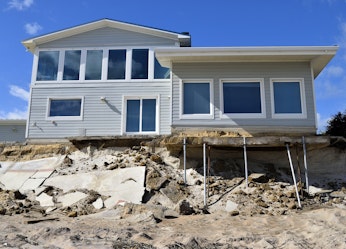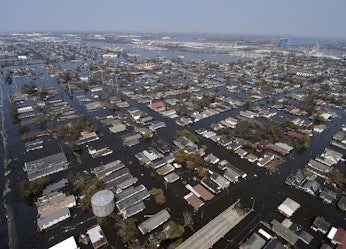

M|O Perspectives
Check back here for our thoughts on the latest developments in our industry.
Resilience: Proactive considerations will go a long way
Nov 15, 2018
More and more of our clients are asking, “How does my property stack up against others?...What can we do to increase our chances of avoiding new construction problems?...And what can we add to this existing building to improve its resilience?”
If you are not aware of what building resilience is, or what you need to know about it, you are not alone. This emerging topic refers to the ability of a building to recover (meaning, to be restored to normal operations) from severe natural events such as hurricanes, flooding, earthquakes, wildfires, winter storms and more.
For building owners and investors, this is a growing area of interest for which there are several driving factors. For example:
- International rating organizations like GRESB—which allow large investors to assess an institution’s portfolio on sustainability and financial performance—are looking at resiliency and measuring a property’s performance.
- Whether it is a local or regional climate event, clients are having to deal with the need to retrofit a structure to meet new retroactive codes, repair damage from natural disasters or improve building performance to keep utility and insurance costs in line. These clients are being forced to face the reality of severe climate effects on their structures more frequently than they ever planned for.
- With the never-ending stream of news stories available these days we are now able to see that these events are taking place in one form or another virtually every day around the country. With “once in 100 years” storms happening on a regular basis and 24/7 news coverage of events, it is hard for any design professional or real estate company to say they were unaware of the threat of natural disasters and climate events.
While owners understand how to design for resilience, most don’t expect or actually plan for _the reality_of a worst-case scenario. As such, they often don’t put in place budgets and features that improve resilience. Right now, we are in one of the biggest sustained building booms in American history—owners with currently-planned construction projects have no excuses for falling short on including the right features to resist natural disasters. So, with awareness being established, the question then becomes, “What did you do to prevent or mitigate the disruption to property operations?”
The preventive or corrective design measures that improve resilience are, in many cases, decidedly non-exotic, though they have a great impact. These include water-resistant lobby finishes, sufficient site drainage, adequate roof structure tie downs and many more mundane, everyday elements. Measures like these are common and well understood. However, retrofitting them into existing buildings is not easy and virtually never quick. Getting started early, before the “future” event becomes today’s problem, is critical. A resilience study by an experienced architect or engineer can highlight issues and help owners develop a strategy to avoid operational problems.
Marx|Okubo performs resilience reviews for both existing and to-be built structures. We can help you evaluate conditions, solve problems and implement solutions that will improve your property or portfolio’s performance. For more information contact sandy_blair@marxokubo.com


What we do.
- Owner's Representation
- Property Condition Assessment
- Project Management
- Constructability Reviews
- Repair | Reconstruction
- Facility Condition Assessment
- Construction Loan Monitoring
- Accessibility
- Building Enclosure
- Fire | Life Safety
- Mechanical | Electrical | Plumbing
- ESG | Sustainability & Resiliency
- Structural Engineering
- ASAP® - Automated Structure Alert Program
Marx|Okubo is a national architecture/engineering/construction consulting firm that works with real estate owners, investors and lenders—at every point of the property lifecycle—to evaluate their building projects, solve complex challenges and implement tailored solutions. We help clients understand their projects’ complexities, so they can make more informed decisions and, ultimately, mitigate their risk.




